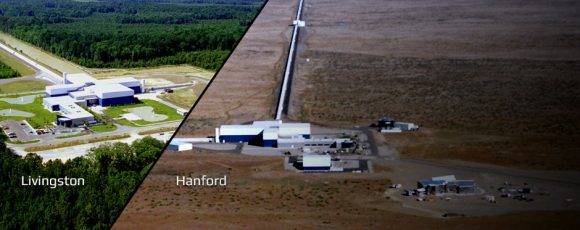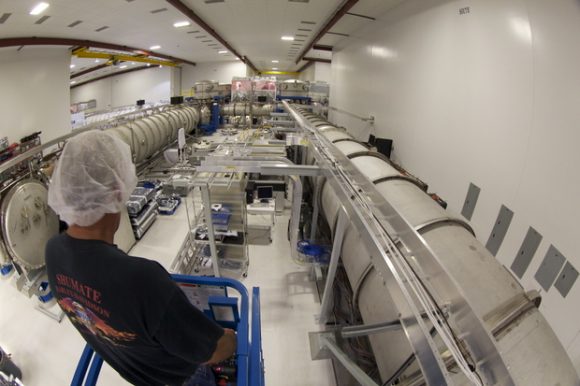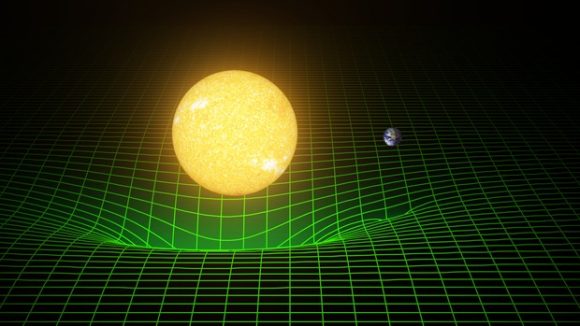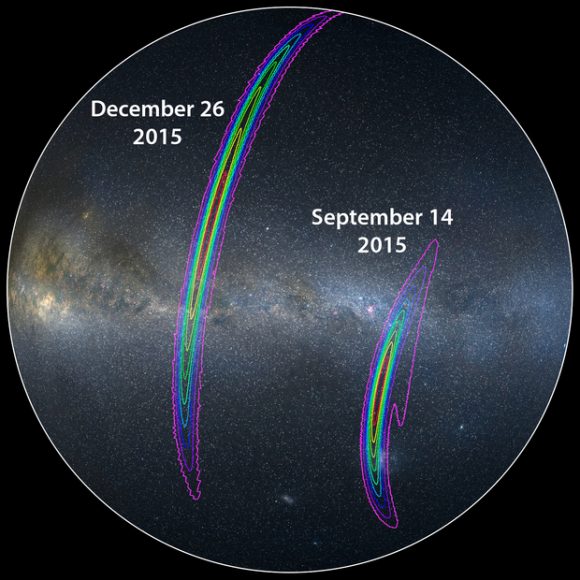Update: This year’s Nobel Prize in Physics has been awarded to David J. Thouless (University of Washington), F. Duncan M. Haldane (Princeton University), and J. Michael Kosterlitz of Brown University for “theoretical discoveries of topological phase transitions and topological phases of matter”. One half of the prize was awarded to Thouless while the other half was jointly awarded to Haldane and Kosterlitz.
The Nobel Prize in physics is a coveted award. Every year, the prize is bestowed upon the individual who is deemed to have made the greatest contribution to the field of physics during the preceding year. And this year, the groundbreaking discovery of gravitational waves is anticipated to be the main focus.
This discovery, which was announced on February 11th, 2016, was made possible thanks to the development of the Laser Interferometer Gravitational-Wave Observatory (LIGO). As such, it is expected that the three scientists that are most responsible for the invention of the technology will receive the Nobel Prize for their work. However, there are those in the scientific community who feel that another scientist – Barry Barish – should also be recognized.
But first, some background is needed to help put all this into perspective. For starers, gravitational waves are ripples in the curvature of spacetime that are generated by certain gravitational interactions and which propagate at the speed of light. The existence of such waves has been postulated since the late 19th century.

However, it was not until the late 20th century, thanks in large part to Einstein and his theory of General Relativity, that gravitational-wave research began to emerge as a branch of astronomy. Since the 1960s, various gravitational-wave detectors have been built, which includes the LIGO observatory.
Founded as a Caltech/MIT project, LIGO was officially approved by the National Science Board (NSF) in 1984. A decade later, construction began on the facility’s two locations – in Hanford, Washington and Livingston, Louisiana. By 2002, it began to obtain data, and work began on improving its original detectors in 2008 (known as the Advanced LIGO Project).
The credit for the creation of LIGO goes to three scientists, which includes Rainer Weiss, a professor of physics emeritus at the Massachusetts Institute of Technology (MIT); Ronald Drever, an experimental physics who was professor emeritus at the California Institute of Technology and a professor at Glasgow University; and Kip Thorne, the Feynman Professor of Theoretical Physics at Caltech.
In 1967 and 68, Weiss and Thorne initiated efforts to construct prototype detectors, and produced theoretical work to prove that gravitational waves could be successfully analyzed. By the 1970s, using different methods, Weiss and Denver both succeeded in building detectors. In the coming years, all three men remained pivotal and influential, helping to make gravitational astronomy a legitimate field of research.

However, it has been argued that without Barish – a particle physicist at Caltech – the discovery would never have been made. Having become the Principal Investigator of LIGO in 1994, he inherited the project at a very crucial time. It had begun funding a decade prior, but coordinating the work of Wiess, Thorne and Drever (from MIT, Caltech and the University of Glasgow, respectively) proved difficult.
As such, it was decided that a single director was needed. Between 1987 and 1994, Rochus Vogt – a professor emeritus of Physics at Caltech – was appointed by the NSF to fill this role. While Vogt brought the initial team together and helped to get the construction of the project approved, he proved difficult when it came to dealing with bureaucracy and documenting his researchers progress.
As such, between 1989 through 1994, LIGO failed to progress technically and organizationally, and had trouble acquiring funding as well. By 1994, Caltech eased Vogt out of his position and appointed Barish to the position of director. Barish got to work quickly, making significant changes to the way LIGO was administered, expanding the research team, and developing a detailed work plan for the NSF.
Barish was also responsible for expanding LIGO beyond its Caltech and MIT constraints. This he did through the creation of the independent LIGO Scientific Collaboration (LSC), which gave access to outside researchers and institutions. This was instrumental in creating crucial partnerships, which included the UK Science and Technology Facilities Council, the Max Planck Society of Germany, and the Australian Research Council.

By 1999, construction had wrapped up on the LIGO observatories, and by 2002, they began taking their first bits of data. By 2004, the funding and groundwork was laid for the next phase of LIGO development, which involved a multi-year shut-down while the detectors were replaced with improved “Advanced LIGO” versions.
All of this was made possible by Barish, who retired in 2005 to head up other projects. Thanks to his sweeping reforms, LIGO got to work after an abortive start, began to produce data, procured funding, crucial partnerships, and now has more than 1000 collaborators worldwide, thanks to the LSC program he established.
Little wonder then why some scientists think the Nobel Prize should be split four-ways, awarding the three scientists who conceived of LIGO and the one scientist who made it happen. And as Barish himself was quoted as saying by Science:
“I think there’s a bit of truth that LIGO wouldn’t be here if I didn’t do it, so I don’t think I’m undeserving. If they wait a year and give it to these three guys, at least I’ll feel that they thought about it,” he says. “If they decide [to give it to them] this October, I’ll have more bad feelings because they won’t have done their homework.”

However, there is good reason to believe that the award will ultimately be split three ways, leaving Barish out. For instance, Weiss, Drever, and Thorne have been honored three times already this year for their work on LIGO. This has included the Special Breakthrough Prize in Fundamental Physics, the Gruber Cosmology Prize, and Kavli Prize in Astrophysics.
What’s more, in the past, the Nobel Prize in physics has tended to be awarded to those responsible for the intellectual contributions leading to a major breakthrough, rather than to those who did the leg work. Out of the last six Prizes issued (between 2010 and 2015), five have been awarded for the development of experimental methods, observational studies, and theoretical discoveries.
Only one award was given for a technical development. This was the case in 2014 where the award was given jointly to Isamu Akasaki, Hiroshi Amano and Shuji Nakamura for “the invention of efficient blue light-emitting diodes which has enabled bright and energy-saving white light sources”.
Basically, the Nobel Prize is a complicated matter. Every year, it is awarded to those who made a considerable contribution to science, or were responsible for a major breakthrough. But contributions and breakthroughs are perhaps a bit relative. Whom we choose to honor, and for what, can also be seen as an indication of what is valued most in the scientific community.
In the end, this year’s award may serve to highlight how significant contributions do not just entail the development of new ideas and methods, but also in bringing them to fruition.
Further Reading: Science, LIGO, Nobelprize.org


People who make things happen ….
As easy as it might seem, in a world full of strife and want for recognition, creating a team can be a person’s nightmare.
I’ve seen a whole department empty and any temporal worker leave for chosing the “wrong” side, until exactly “one” employee was left within a multi-million company. (Sadly enough, with the cause of the problem actualy the first to leave, heading for a political career)
I’ve seen a whole department shrug when a senior found himself at a loss when things had changed during his vacation …
Grafting a team, as explained in this “complicated” story .. is doctoring on a psychological understanding level, with intellectuals, that goes beyond the depressant meds.
I think that deserves at least a recognition on its own.
One of the constraints of the Nobel Prize is that it cannot be shared by more than three individuals.
You bet that the Nobel Peace Prize is complicated.
In fact, they do not, if the committee feels, have to award anyone who does not meet the standards set for the field of study.
This happened to Albert Einstein. He was supposed to receive is Nobel in 1921, but he was at the time nominated but no one felt he met the standards (like General and Special theories on Relativity did not meet their requirements).
Einstein did receive his award a year later, as the Nobel award committee said, “for his services to Theoretical Physics, and especially for his discovery of the law of the photoelectric effect.”
Sometimes even a theory that has been proven, the benefits may take 20, 30 or even 50 years to realize.
Special Relativity was first published in 1095, with General Relativity in 1921. From these two theories, it took 20 years to split the atom and 58 years to put a man on the Moon, all made possible by those two theories.
Sometimes in making the award, like in John Nash’s case, received his award 54 years after his dissertation on non-cooperate games was written in 1950. It was only when his theory gave a serious boost to the field of Game Theory, Differential Geometry and complex systems to name a few, it wasn’t until it was applied in bargaining that in 1994 he won the Nobel Memorial Prize not in mathematics, but economics.
This is their predicament. They must be able to see future benefits while a person is still alive. No one, not even Nash himself, would expect a 28-page dissertation would create works that changed our world.
Otherwise, I think that the father of modern physics and space exploriation, Albert Einstein, should have won at least six of them.
So giving the award to the three who came up with the theory is the right one. The people who detected it used the work of the three others to develop LIGO. And that should be a different award.
Besides, Einstein was the first to postulate the existence of gravitational waves, so shouldn’t he receive the award?
Yes, I was surprised the Physics prize didn’t go to the LIGO team leaders, given the incredible media fanfare associated with their announcement earlier this year. However, I’m sure their time will come when more.results are forthcoming. Let’s face it, one swallow doesn’t make a summer, does it?
It demonstrates a highly unethical attitude to expect to be given an award for your work, other than your salary.